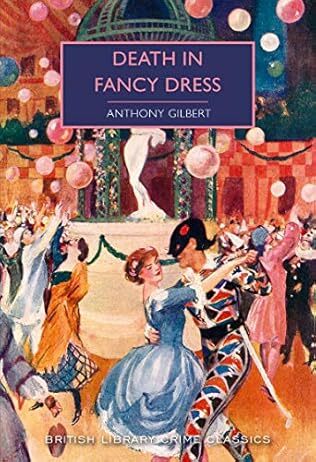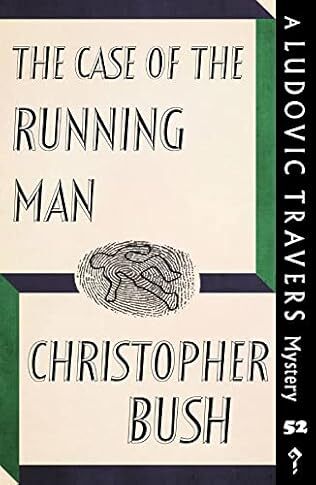Martin Fone's Blog, page 8
August 10, 2025
Challenge Eating

With the hospitality sector struggling, some enterprising restaurants are looking for ways to lure in new customers. A trend that is beginning to catch on is to offer eating challenges. Here are ten of the best or, if you prefer, the most extreme.
At MeatLiquor, famous for its queues as much as for its sloppy burgers, its Triple Chilli Challenge invites participants to gorge on a jalapeno-topped burger, a chilli dog, and a plate of chilli cheese fries in less than ten minutes. Winners will skip the queues for life.
Meanwhile the Wonder Cafe offers s traditional British fry up with a difference, four fried slices, four slices of toast, four eggs, six sausages, six rashers of bacon, six hash browns, four black puddings, tomatoes, beans, and a single mushroom, all to be eaten within 45 minutes. The challenge has only been won once.
Over at Red Dog Saloon, their challenge consists of eating six hot wings, coated in a sauce made from naga viper chillies, rated as one of the hottest in the world. Contestants are advised to don plastic gloves, sign a waiver, and not drink anything for at least five minutes afterwards.

At The County Arms, dubbed Wandsworth’s favourite pub, offers its adventurous punters a sausage roll, but no ordinary one. It measures two feet and anyone who can polish one off in under five minutes wins a tee shirt. On Wednesdays Porky’s holds a challenge consisting of a double order of ribs and a double order of fries. Those who devour this mountain of food also win a tee shirt and the fastest of the month gets a free meal for two, as if they need it!
Bengal Village offer a phaal curry challenge, offering the plucky few the opportunity to consume what they describe as “the hottest curry in the world” which includes the notorious ghost chilli. The curry is ghost-like as it does not appear on the menu but can be knocked up on request.
I love a shepherd’s pie but I am not sure up to the whopper which the Pride of Paddington pub offers to its adventurous gourmands. Weighing four kilos and the size of a birthday cake, no one at the time of writing has managed to devour it in one sitting.
Trendy burger joint, Dirty Bones, is offering a Mac Attack, comprising three beef patties, BBQ pulled pork, salad, tomatoes and mac and cheese all squeezed into brioche buns and served on a bed of dirty fries. Eat it all in 10 minutes and you get your meal free, a novelty cap and your picture on their Wall of Fame.
Pho and Bun’s Food Challenge, meanwhile, consists of an epic Asian-themed feast of pork belly, prawn patties, beef patties, vegetables and mango all stacked between two steamed buns, accompanied by an enormous order of sweet potato fries. Eat your way through the entire thing in 15 minutes and you’ll get your meal for free and receive a £50 voucher to spend on your next splurge.
Finally, on a slightly more modest scale, you could settle for Tinseltown Diner’s challenge burgers, four patties alongside two sides and fries. More than enough to get your teeth into, I would say.
August 9, 2025
Trend Of The Week (5)

A craze that is sweeping through certain sections of Japanese society at the moment is nui-katsu. Katsu means lifestyle while nui is an abbreviation of nuigurumi, which means a stuffed animal or puppet. Put all that together and nui-katsu means living with soft toys, principally stuffed animals, but for practitioners it means much more than that. It means going out with them, treating them well and sharing cute pictures of them living their best lives on social media.
Such is the craze that more and more adults are travelling around Japan with their much-loved nuigurumi, raising the problem of where to put them at night. The enterprising Tokyo Inn hotel chain has started offering rooms with cute little cots which can be hired for an extra 300 yen, about £1.50, a night.
The gimmick has been so successful that the chain is planning to expand their offering. As one reviewer wrote recently, “the stuffies are sleeping soundly in dreamland”.
It takes all sorts.
August 8, 2025
The Vase Mystery

A review of The Vase Mystery by Vernon Loder – 250628
One of the fascinating aspects of reading Golden Age detective fiction is the light that it shines on the changing perspectives on types of crime. Take shoplifting. In 2024, according to the Office for National Statistics there were 516,971 recorded offences in England Wales, a 20% increase over 2023 and the highest recorded since records began. It barely merits a shrug of the shoulders but in 1929 when Vernon Loder’s The Vase Murder was published the suspicion of involvement in shoplifting could render the vaguely respectable liable to the unwanted attentions of a blackmailer.
The book’s focal point is the Hotel Haut Ton in the seaside town of Hallsea which has a number of long-term residents who are settling down for the winter season, a literary device, rather like the country house party or a railway carriage, which allows the author to bring together an unlikely collection of characters who, otherwise, would be unlikely to rub shoulders with each other.
At the time of the incident Mrs Goville-Gores has eleven guests, including the inevitable two old ladies, Mrs Smith and Miss Hapes, a military man, Captain Statler, Blanche Tremayne and her fiancé Tommy Vance, an artist, the impecunious Whitney Carroll, impatiently waiting for his rich aunt to die so he can get his hands on her estate, Miss Hunter, whom some of the residents thought would make a match with Carroll, the inscrutable Mrs Inuda, and the Granges. Mr Grange is an odious character, disliked by all, a peeping tom, a stagger in the parlance of the book, as well as a blackmailer. He had a heated violent argument with the Captain and seems to have his claws into both Carroll and the landlady from whom he receives very favourable terms.
One evening as the guests are dressing for dinner, Mr Grange is found dead in his room after a loud crash is heard, his body lying next to the shattered remains of a vase. The circumstantial evidence suggests that the death was accidental, indeed Carroll comes up with a very plausible explanation of what had occurred. However, Superintendent Fox sensibly begs to differ, not least because there are a number of guests who had reason enough to want to see Grange dead and because he had set a trap which proved to his satisfaction that someone had entered the locked room after the murder had been discovered and doctored the evidence using some paint and some hairs from Grange’s brush.
From thereon the book takes the form of a police procedural as the indefatigable and extremely thorough Fox looks into each of the suspects to establish their innocence. This section is well done and the reader is led to believe that one guest and then another is the culprit, especially as it emerges that Grange was making a comfortable living by blackmailing them. It is only when Fox begins to look into the backstory of Mrs Goville-Gores and the allegation that she was involved in the theft of a mink coat, a charge that she had been acquitted of in court, that he begins to pick up the right scent.
With a number of small points to iron out, including the Bushian theme of a woman who dyes her hair, he comes to a surprising conclusion. Unfortunately, the misinterpretation of his orders as he sets an elaborate trap allows the culprit to escape and do away with themselves. While frustrated Fox feels that Grange more than merited his comeuppance.
The disappointing aspect of the book for me was the handling of Brown, who is not the brightest button in the box. There is no sympathy for his mental state and he becomes an object of fun and the subject of some harsh commentary on the merits of people with mental conditions. Although by no means a classic, it is engaging enough with a nice twist at the end, which will wrongfoot most readers. It does not always pay to be too cool in a moment of crisis.
August 7, 2025
Arber Arboretum Gin

Born in 1879 Agnes Arber was a pioneering botanist, the first woman to be named a fellow of the Royal Society, an honour bestowed upon her in 1946, and on May 24, 1948, the first woman to receive the Gold Medal of the Linnean Society. Her first published work, and perhaps her best known, Herbals, Their Origin and Evolution (1912), an account of herbals published between 1470 and 1670, reflected her passion as a botanical historian.
Arber was also fascinated by plant anatomy, publishing Water Plants: A Study of Aquatic Angiosnperms (1920), Monocotyledons: A Morphological Study (1925), and The Gramineae: A Study of Cereal, Bamboo and Grass (1934). She later developed an interest in philosophy, her final book, The Manifold and the One, published in 1957, which explored the concept of universal unity.
One of the fascinating byproducts of exploring different gins is that it provides an opportunity to improve one’s general knowledge. Regrettably, the significance of Arber had escaped me until I picked up a bottle of Arber Arboretum Gin on a recent visit to my spiritual home in Cornwall, the Constantine Store aka Drinkfinder UK. It is named in honour of the botanist and distilled by our old friends, Langley Distillery, in a copper gin still called Jenny, one of the oldest of its kind working in the UK.
Distillers, once they have found a winning formula, are often tempted to use the same botanicals but to turn up the dial to eleven but here the dial has been turned to seven, the Arboretum gin being a softer version of their Original Gin. There are nine botanicals in the mix, with a traditional base provided by juniper, coriander, cassia, and angelic, with the citric elements provided by orange, lemon, and grapefruit, topped off with liquorice and, intriguingly, iris.
It makes for a crisp, juniper-forward spirit, not too heavy but one that offers a pleasant mix of earthiness, spice, and the citric elements, the latter giving a refreshing and slightly sour aftertaste. With an ABV of 37.5% it is not going to knock your socks off but if you are looking for a light gin for sipping on a summer’s evening, you will not go far wrong with this.
Sadly, the bottle is not the riot of colour that the other Arber gins are presented in. Instead, it is a slim, round bottle made of clear glass with narrow shoulders, and a long neck leading to a white screwcap. The front label looks like a design for a book plate or a piece of stained glass, using copper on a white background and with black lettering to good effect. The label on the rear is informative, with a listing and, indeed, pictures of each of the nine botanicals featured.
I am sure Agnes would have approved.
Until the next time, cheers!
August 6, 2025
Death In Fancy Dress

A review of Death in Fancy Dress by Anthony Gilbert – 250626
Anthony Gilbert was one of the noms de plume of Lucy Malleson and Death in Fancy Dress, originally published in 1933 and reissued as part of the British Library Crime Classics series, is part thriller, part murder mystery. It is a bit of a slow burner with the body not turning up until after the half way point of the story.
The thriller element is provided by a string of unexplained suicides amongst pillars of society, about whom some disreputable secrets have been found and from whom money has been extorted until they cannot bear the pressure and crack. A high-level investigation has traced a network controlled by someone code named Spider and the nexus of the plot seems to be Felton Abbey, the residence of Lord Nunn and his wife, Eleanor, who have rented the pile from Sir Ralph Felton. Philpotts is masterminding the investigation but the man on the spot is a civil servant, Arthur Dennis, a man with a stutter who, coincidentally, is engaged to Hilary Feltham, daughter of Eleanor through her first marriage.
The story, though, starts in India where we are introduced to Anthony Keith, a lawyer, and his old schoolfriend, adventurer and jack the lad, Jeremy Freyne, who are about to sail back to Blighty. Once they arrive in London, Keith finds two letters, one from Eleanor Nunn and the other from Philpotts, advising him of some incipient crisis developing at Feltham and urging him to go there at once, while Freyne is devastated to learn of Hilary’s engagement as he was determined to marry her himself. They both hotfoot it to Feltham, although typically of the book’s casual and long-winded approach to setting up the story they get lost in the mist.
Eventually we get to the crisis point of the story, a fancy dress ball to celebrate Hilary’s coming of age. There is tension in the air as Sir Ralph Felton, Hilary’s cousin and also one of her suitors, owner of Feltham which he has rented out to the Nunns with whom he has fallen out, has made it known he is out to cause trouble. However, he does not turn up, but a body of what seems to be a tramp is found in the grounds. On further investigation, Dennis discovers that it is Sir Ralph, who was coming to the ball as a tramp. Who did it and why and what, if any, connection was there to the activities of the Spider?
After spending more than half the book getting to this point, Malleson then suddenly puts her foot on the accelerator and the rest of the story rattles along at a some pace. We see much of the investigation from the perspective of Keith with some assistance from Freyne but while they do make some important finds, they draw the wrong conclusions only to have the errors of their ways pointed out by Dennis who, more discreetly, was carrying out his own enquiries in an attempt to validate his theories.
What I enjoyed about the story is that all of the protagonists are flawed characters, some with greater flaws than others. Sir Ralph is the archetypical villain with more than a little whiff of scandal about him and someone the world is well rid of. The female members of the cast all are nuanced, Eleanor, whose first husband was suspected of leaking sensitive secrets during the War, is surprisingly relaxed with the prospect of her daughter throwing her hat in with Ralph, a clearly unsuitable marriage, while Hilary behaves like a spoiled brat. Only Merial Ross, Lord Nunn’s sister, is vaguely likeable, a sharp-tongued, wickedly observant woman. Even the protagonists, Keith, Freyne, and less so, the long suffering Dennis, are not the paragons of virtue. Like real life there is no black or white.
An old woman’s chance encounter in the dark, a half crown carved with the intended recipient’s name, a car containing a man and a woman driving before the start of the ball, the suspicious behaviour of a butler and a slip of the pen in a confession note all help to bring the case to a conclusion and dismantle the network. There is no honour among blackmailers and traitors.
I found the balance of the book a little strange but it was an enjoyable enough read with the ambiguity of which pair were responsible for what maintained until the end.
As an added bonus there are two short stories, Horseshoes for Luck and The Cockroach and the Tortoise.
August 5, 2025
The Fever Tree (2)

It can be fairly argued that along with Jared Diamond’s Guns, Germs and Steel cinchona bark, valued for its medicinal properties in the treatment of malaria, played a major role in the successful colonisation of countries by the imperial powers. It reduced the mortality rates amongst troops and administrators, allowing them to maintain a permanent presence in areas where previously they had struggled to survive.
By 1768 cinchona bark was being used as a prophylactic, James Lind, a British naval surgeon, recommending that as long as a ship lay at anchor in a tropical port “every man receive a daily ration of cinchona powder”. The increase in demand led to supply issues with trees being felled in indigenous regions in industrial quantities and prices rising, Lack of experience of the bark, uneven qualities of the consignments and the deliberate contamination of the bark with barks of other tress compounded the problems.
Nevertheless, powdered cinchona bark “administered in various forms and in various vehicles remained the main anti-malarial agent until 1820”, when, according to Kew, the first quinine alkaloids were extracted and described by Pierre Pelletier and Joseph Caventou, becoming within five years the standard treatment for malaria.
With the supply of the requisite raw material continuing to be in short supply and prices on the increase, the Dutch in 1852, and the British, under the leadership of Sir Clements Markham in 1860, sent expeditions to South America to secure supplies of cinchona seeds and plants to grow in their colonies. An obvious solution, but they proved tricky to grow.
They do not like frost, trees preferring a cool climate where there is little contrast between summer and winter and day and night temperatures, preferring a rich soil and unable to bear stagnant moisture on their roots, direct sunlight, or flat land. In Madras seed beds were protected by layers of fern, sufficiently thick to shade the ground. They also, according to T C Owen in his Cinchona Planter’s Manual (1881), had the “extraordinary habit of sporting or hybridising…most marked in the finest species”. On top of all that, only three of the 65 species of the genus Cinchona produced sufficient alkaloid to be worth cultivating.

Nevertheless, between 1854 and 1864 cinchona trees were introduced into India and Java and experiments were conducted in growing in various outposts of the British Empire, including Burma, Sri Lanka, Malaya, the Sudan, Jamaica, Trinidad, St Helena, Mauritius, Australia, and New Zealand. However, according to an article in Nature, published on December 7th 1929, the principal source of cinchona from the British Empire was from government-owned estates in India, principally in “the Nilghiris in the south, in the Darjiling district in Bengal (perhaps the best known) and…in Burma”. There were also quinine factories in the Bengal and Madras Provinces.
The widespread uprooting of cinchona trees to obtain bark was phased out after 1863 when a Mr McIver discovered that “if a portion of the bark of a living cinchona be carefully removed so as not to injure the young wood of the tree the removed bark will, provided certain precautions are taken, gradually be renewed.” Moreover, the renewed bark which grew back over three years was richer in alkaloids than the original. This process would then be repeated every three years until the tree died naturally or was too old to renew its bark.
August 4, 2025
Nemesis

A review of Nemesis by Agatha Christie – 250624
The twelfth in Christie’s Miss Marple series, originally published in 1971, unusually see her elderly spinster sleuth very much in centre stage rather than lurking in the background unobtrusively garnering information. She is set a task from beyond the grave, a letter from the recently deceased millionaire, Jason Rafiel, whom we and she encountered in A Caribbean Mystery, offering her the opportunity to play the part of Nemesis with a bounty of £20,000 if she is successful. The problem is, though, that she is given very little information to go on but as the story unfolds she begins to garner some clues and meet people, some of whom will be helpful and others who might help her complete her mission.
Often I find it is best not to think too deeply about a Christie plot. If the task that Rafiel wants Miss Marple to complete was that important to him, surely he would have provided her with a lot more information to go on and, possibly, even briefed her before his death. It would have been far easier than the meticulous planning that was involved to ensure that all the necessary people would play ball and be in the right place at the right time as the tour group, on which he has booked her, winds its way through merry England.
The other absurdity was the two guardian angels, the Misses Cooke and Barrow, lurking in the dead of night, one outside in the corridor and the other hidden in a cupboard, to be there dei ex machina-like to protect the defenceless Miss Marple in her hour of need. It may have been the only way to get Miss Marple out of her predicament but it was a clumsy, ham-fisted device.
As the novel’s title suggests, there is a strong flavour of Greek mythology and tragedy running through the book. There are the three sisters, Clotilde, who reminds Miss Marple of Clytaemnestra, a character I considered capable of murdering anyone not just her husband, the rather odd and timid Anthea, and the sensible Lavinia, who bring to mind the Three Furies. It is a tale of powerful emotions where characters are trapped by their feelings in situations where only drastic action can resolve matters, either to effect an escape or to retain one’s hold over someone you love. That the love in question is homosexual in the broadest sense of the word, and even then rather gingerly danced around, makes it even more powerful.
As the title suggests Miss Marple’s role is to avenge a grievous wrong, which, of course, she does with aplomb. For the armchair sleuth there are some enormous clues dropped from time to time, not least of the gardening variety, and while classic Christie is all about misdirecting and pulling a rabbit out of a hat at the last minute, the identity of this culprit was fairly predictable and the tale’s interest lay primarily in how Miss Marple was able to piece the case together and formulate her conclusion.
The other drawback of the book for me was that the beneficiary of Rafiel’s meticulous planning and Marple’s sleuthing is such an unsympathetic and unlikeable character whom everyone is certain will fritter away the second chance that they have been given. The reader is left with the distinct feeling that whether she succeeds or fails, in the end Miss Marple will not make a halfpence of difference, save augmenting her bank account. She delights in putting the money in her current account because all she needs for a rainy day is an umbrella.
Miss Marple has aged considerably and her infirmities add to the sense that this particular sleuth, acute as her senses might still be, is coming to the end of the road, adding to the sense of gloom that seems to pervade the book. With the statutory three murders that a Miss Marple story demands coupled with the usual Christie page-turning style, there is much to admire, even if it is not one of her best.
August 3, 2025
Paceometer

It is a truth universally acknowledged that the faster you travel, the quicker you will get to your destination, but not necessarily as quickly as you imagine, according to an article in the Mrch 2013 edition of Judgment and Decision Making. They report studies which show that drivers made erroneous estimations of how much time they would save if they increased their speed, overestimating the time if they increased from a relatively high speed and underestimating when increasing from a lower speed. Respondents often thought that increasing the mean speed from 70 to 110 kph would save more time than an increase from 30 to 40, although the latter actually saves more time.
This time-saving bias, they argue, is down to people’s failure to recognize that the relationship between speed and time saved is not linear but curvilinear and this bias could be reduced by converting speed information into a more intuitive measure of pace such as the time required to cover a fixed distance. Hence the paceometer illustrated above.
The black digits show speed in the conventional way – miles per hour – while the blue numbers show how many minutes it takes to travel ten miles. A close inspection reveals that the relationship between the two is non linear and that the faster you are going, the less time you will save by driving even faster. Drive at thirty miles per hour instead of 20 and you will shave ten minutes for every ten miles driven, whereas going at 80mph instead of 70 saves “under a minute”.
One to think about when you are behind the wheel.
August 2, 2025
Tactic Of The Week

With the football season upon us managers will be desperately searching for ways to get one up on their opponents and boost their chances of winning. One ruse to consider was that adopted by Changchun Xidu FC, who ahead of their China League Two fixture against Shanxi Chongde Ronghai on June 28th, decided to decorate their opponents’ dressing room with yellow paper charms.
Known as “fu”, the use of paper charms is a Taoist practice believed to use spirit energy to bring good fortune. However, they can also be subverted to cause harm and misfortune to others which is what the crafty hosts had in mind when they inscribed them with the message “By decree, Shanxi Chongde Ronghai must be defeated”.

It seemed to work as the home team ran out winners by 2-0, the goals coming in the 27th and 88th minutes. The league administrators, though, took a dim view of their attempts to summon spiritual assistance and fined them 30,000 yuan, around £3,500, making it a pyrrhic victory.
Back to the drawing board, chaps.
August 1, 2025
The Case Of The Running Man

A review of The Case of the Running Man by Christopher Bush – 250622
The fifty-second novel in Bush’s long-running Ludovic Travers series, originally published in 1958 and reissued by Dean Street Press, sees his sleuth back in familiar territory, the art world. Other areas of familiarity are that the case takes Travers back to Mainford, where the earlier Case of the Red Brunette was based and we learn of the tax efficiency of buying and selling antiques. Also, as owner of the Broad Street Detective Agency, Travers walks a fine line between openly collaborating with the police in the form of Inspector Jewle and withholding certain information to protect client confidentiality, although the tension caused by this conflict is not as great as in other stories.
Travers is contacted is contacted by a rich eccentric, William Weddall, who intimates that he will probably have an important and sensitive job for him. At Weddall’s behest he goes to Paris just to post a letter for him and his interest in his new client is piqued when firstly he sees Weddall deliberately miss a boat train and then learns that he had plunged to his death from a window. Travers is contacted by Weddall’s American chauffeur, Sam Martin, who asks him to investigate the death of his employer as he is convinced that foul play was involved. It emerges that at the time of the death a man was seen running away from the crime and he had a distinctive mark, a scar on his chin.
Sam is a likeable and fascinating character, a man of colour with one of the strangest and unlikeliest of accents, a mix of Cockney and New York. It was pleasing to see that Bush has Travers tear a strip off his secretary for being racist towards Sam and although he is an employee Sam is clearly viewed by Weddall as a confidante and almost an equal. Bush portrays him as honest, caring, loyal and he is certainly one of the good guys, a refreshing change from the often, albeit casual, racism often found in Golden Age detective fiction.
As well as Weddall, Grace Amble, his housekeeper at Hinchbrook Hall, is also murdered, another victim who knew too much and tried unwisely to profit from that knowledge. Weddall seems to have made a discovery. With his eyesight failing he believes that he is being scammed and that the paintings which he assumed were valuable are not quite what they seem. He has been the victim of a fraud not unlike that which forms the main premise of Freeman Wills Crofts’ earlier Golden Ashes.
It is a case of a will about to be changed, a desperate need for cash, and a fear of discovery. The most obvious suspect appears to have cast-iron alibi, especially as suspicion can be diverted to the man who was seen fleeing the scene of the crime. The alibi involves the most familiar of detective fiction tropes but the twist is delightful, a piece of childish mischief providing an unexpected boon which the suspect gladly accepts with both hands. I also enjoyed the motif of a cat and mouse which echoed the last book I had read.
As we come to expect with Bush, the plot is ingenious and tight and while the book misses much of the tension that Travers’ fraught relationship with George Wharton once brought, it is an engaging and fascinating read, made even more memorable by the sympathetic treatment of Sam Martin. Bush may be an irritating stuck-in-the-mud old Tory at times but his heart is often in the right place.



